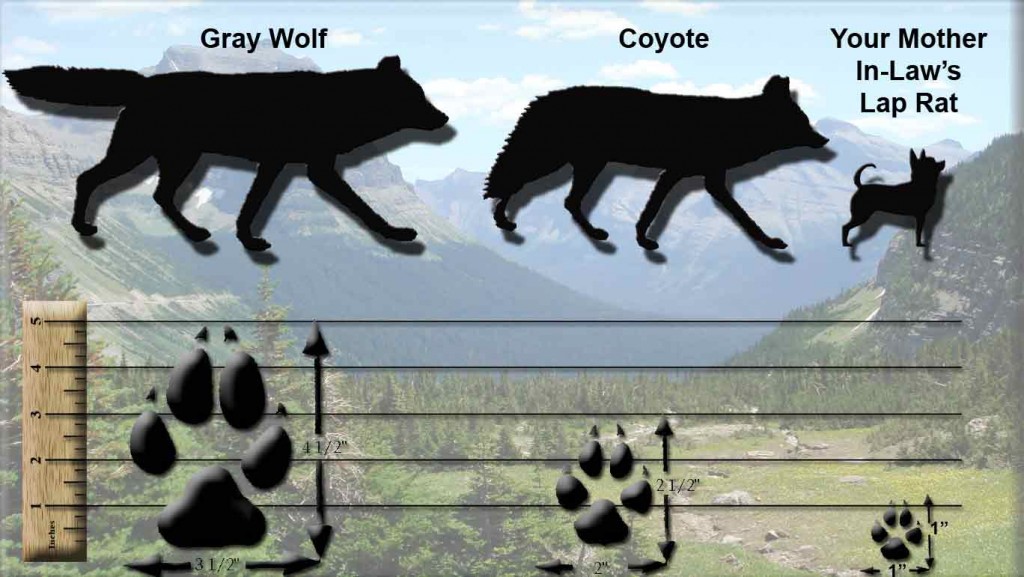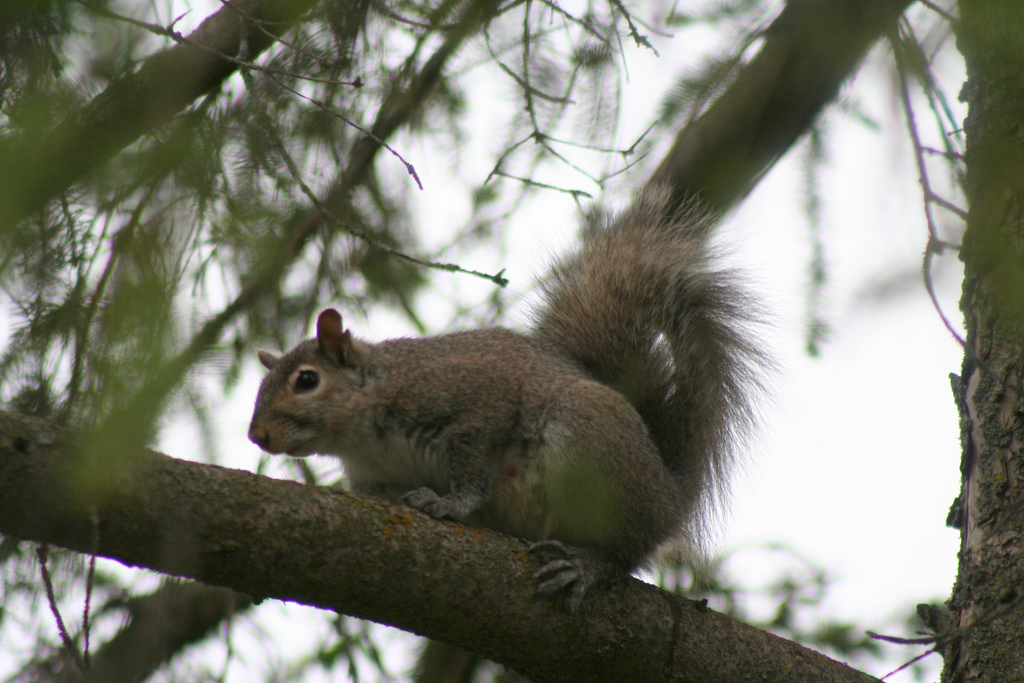In a post about a tracking workshop I led a few years ago, I briefly mentioned how to differentiate coyote scat from that of a domestic dog’s. However scat isn’t always present when you’re tracking – you may have to backtrack a canid for a while before coming upon scat or other scent posts or leavings. Thankfully though, telling the difference between tracks from wild canines vs. domestic is pretty straightforward. Most of the time.
Size doesn’t help overly much – there is wide variety of canine track sizes, both domestic and wild. The wild canid family in the continental US consists of (from smallest to largest) grey foxes, red foxes (not native to North America, by the way – they were brought over by the British for fox hunting), western coyotes, eastern coyotes or coywolves, red wolves, Mexican wolves (very limited numbers in the southwest) and grey wolves. Wild canine tracks can range in size from 1 1/2″ in length up to 5 1/2″ (not including toenails).
Substrate (the type of substance an animal is walking on/in – mud, snow, packed dirt, etc.) changes the look of an animal’s tracks, depending on it’s footing. An animal walking on a softer or more slippery substrate will spread its toes to help it balance, whereas one walking on solid or harder ground will (usually) have more compact tracks. So it’s important to be familiar with the look of canine tracks in a variety of substrates in order to first identify canine tracks from those of other mammals. I have an article about identifying canine tracks for more information.

The toes of this animal are more spread apart and deeply embedded, helping it to balance in the soft mud.

This is a typical look for canine tracks (these belong to a coyote); oval and symmetrical with toenails present.
Following an animal’s trail will tell you the most about it – how it travels, what it investigates, whether it’s traveling alone or with others, etc. It’s a well-known rule of tracking that you never try to identify a single track – several are needed for comparison to make a good id. A single track without any other sign of an animal around it, may not even be a track – just an ‘artifact’ of sorts that resembles an animal footprint. And if you do come upon a trail and wish to follow it, be sure to backtrack the trail, instead of forward tracking it. That will keep you from accidentally disturbing the animal you’re following, should you come upon its den or location.
One of the most tell-tale differences between domestic and wild canines is the trail they leave behind. If you’ve ever been outside with a pet dog, think about how it moves. They run from this tree to that rock, smelling all the while, run after a squirrel and come back around… you get the idea. This is the trail of an animal that doesn’t have to worry about how much energy it expends. It has regular meals and shelter, and a pack of humans to look after its needs.
A wild animal, on the other hand, must be conservative about its movements. They move purposefully, looking for food, shelter, territory, etc. Regardless of its gait (how fast or slow it’s moving), a wild canine trail will go in a relatively straight path. They will stop to investigate smells and possible prey or to leave scent mark in open areas with scat or urine (and it’s great fun to follow an animal doing this, teasing out the story of its travels). But on the whole, its trail leads you in a fairly straight direction. Domestic dogs are also fairly sloppy with their feet. Their tracks are more likely to look like the wider spaced coyote track above than the compact tracks of wild canines.
As with anything in nature there are no absolutes. I’ve seen domestic dog tracks that lead in a very straight path for quite a ways, and coyote tracks that are as sloppy and silly as my dog’s. Tracking can be an exercise in patience – you may follow an animal for over an hour, just to have its tracks disappear and never really identify it to species. But it is a rewarding exercise, teaching us to look and listen with a focus we don’t often have in our day-to-day lives. You don’t need to have any special skill or expertise to go out tracking. All you need is time, curiosity and an appreciation for the outdoors.




Interesting post… Michelle